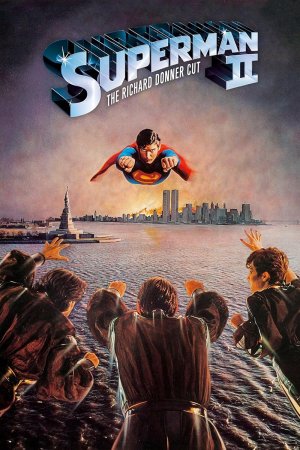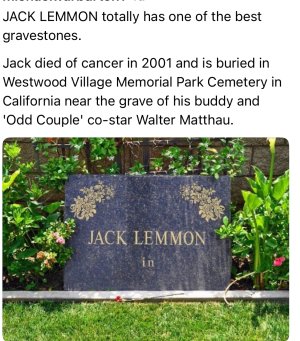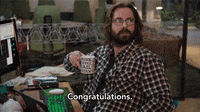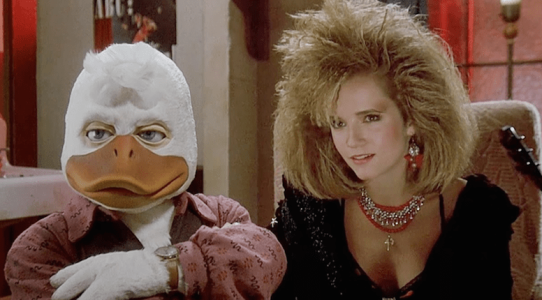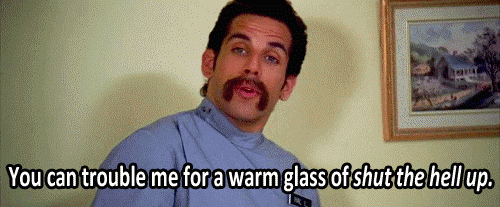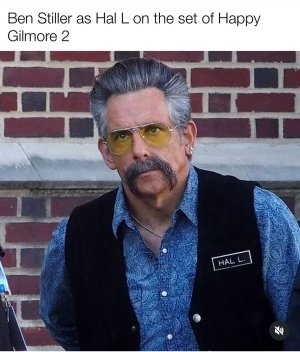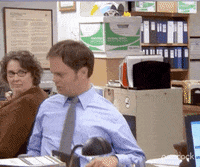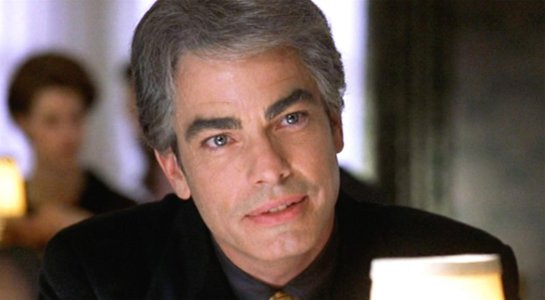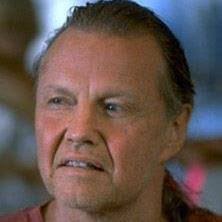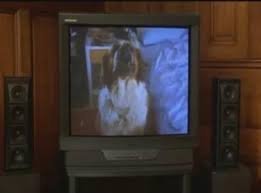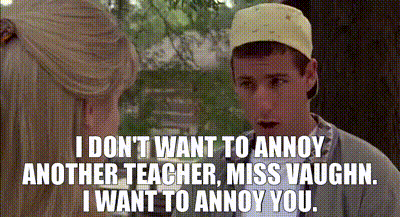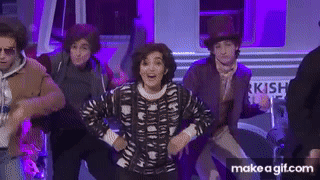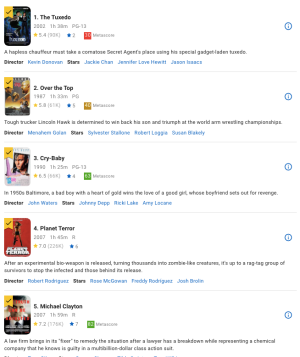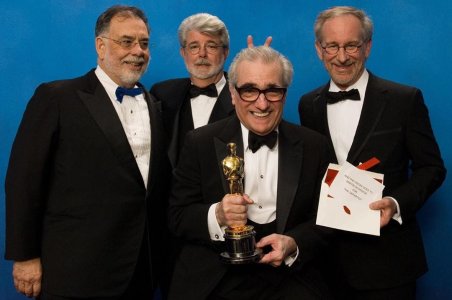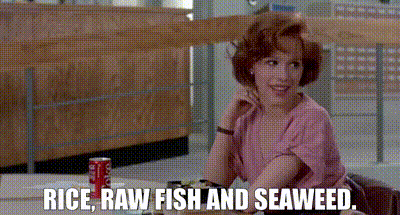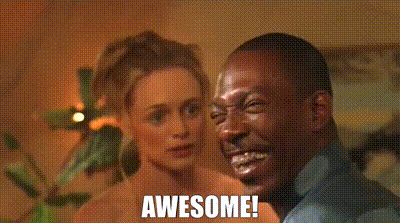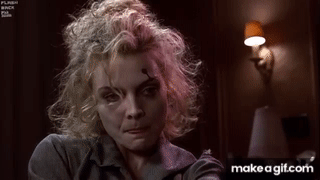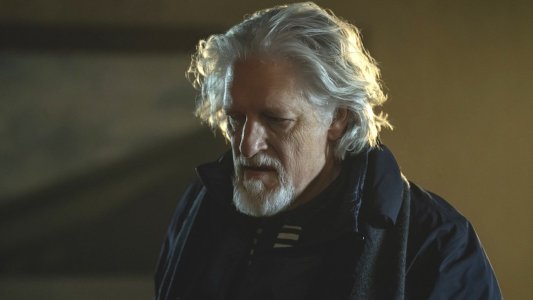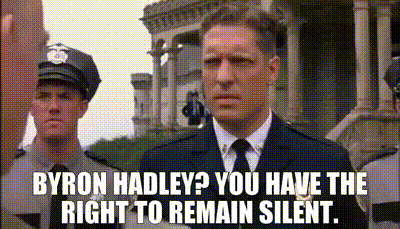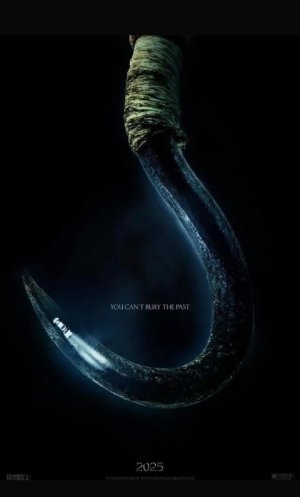The first thing you notice about
Blade Runner 2049 is how stark it is. Opening in a desolate, grey field where
Ryan Gosling‘s Officer K confronts
Dave Bautista‘s Sapper Morton, the world of the
Blade Runner sequel steadily unfolds into the cyberpunk mecca that we were first introduced to back in 1982.
It’s clear that director
Denis Villeneuve and cinematographer
Roger Deakins don’t want to ape the neon-drenched griminess of the original, instead delivering an oppressive urban labyrinth that parallels the dense claustrophobia of modern
Hong Kong high rises. Only one-third of the way through the film do we see hints of a vibrant neonscape cutting through the smog and rain that covers the futuristic Los Angeles. And with that neon: holograms of dancing women in anime-inspired outfits, cute Hello Kitty-style machines, Chinese characters and Japanese kanji galore.
It amounts to a stunning, dissonant image in one of the most gorgeously shot movies of the year, and not an unfamiliar one: science-fiction movies have long borrowed East Asian imagery as a visual shorthand to portray a more globalized society. It has roots in none other than the original
Blade Runner, which drew from the burgeoning Tokyo and Hong Kong metropolises of the time, as well as the rapid globalization in the ’80s. With the massive cultural influence that China, South Korea, and Japan wield today, it’s no huge leap to assume that in the near future, every city would be a cultural melting pot with East Asian influences run amok. But in
Blade Runner 2049, it feels less like a nod to those influences so much as it feels like window dressing.
When East Met West: The Rise of Cyberpunk
Los Angeles is known as one of the United States’ most colorful cultural melting pots, housing a Chinatown that had become so synonymous with the gritty underbelly of the city that
it inspired the title for one of Hollywood’s most famous film noirs. From that Chinatown spawned the makings of the classic cyberpunk aesthetic — Ridley Scott’s
Blade Runnertook that Chinatown-set, gritty neo-noir aesthetic and ran with it.
With 1982’s
Blade Runner and William Gibson’s seminal 1984 novel
Neuromancer came the birth of cyberpunk, a sci-fi genre heavily influenced by Japan’s technological boom of the 1980s and Tokyo’s rapidly rising metropolis. After visiting Japan, Gibson once
said:
Modern Japan simply was cyberpunk. The Japanese themselves knew it and delighted in it. I remember my first glimpse of Shibuya, when one of the young Tokyo journalists who had taken me there, his face drenched with the light of a thousand media-suns – all that towering, animated crawl of commercial information – said, ‘You see? You see? It is Blade Runner town.’ And it was. It so evidently was.
Cyberpunk blew up in the ’90s, and you could see it in everything from
The Matrix, to
Total Recall, to anime itself.
Ghost in the Shell, Akira, and more all depicted a futuristic, grimy vision of Neo-Tokyo whose visuals can be traced back to
Blade Runner and
Neuromancer. It’s a cyclical nature of inspiration, see — from Tokyo to America, back to Tokyo again.
“The work that has influenced me the most in my anime profession would be, of course,
Blade Runner,”
Cowboy Bebopand
Samurai Champloo director Shinichiro Watanabe said in an interview about
his Blade Runner anime short. There’s been a cross-pollination of ideas and influence between the two countries for years — just look to “god of manga” and
Astro Boy creator Osamu Tezuka’s influences in Disney’s
Bambi, and Disney’s subsequent “plagiarizing” of Tezuka’s
Kimba the White Lion for their ’90s film
The Lion King.
These sci-fi films depict a future where cultural boundaries don’t exist. One of the tenets of sci-fi is its potential to predict innovations or technologies within our reach. At the rate that the world is globalizing — on a political, cultural, and social media level — the vision that Villeneuve has for Los Angeles in 2049 is probably not far off. But amidst all Chinese or Japanese slogans and imagery draped over skyscrapers, where are all the East Asian
people?
The ‘Firefly’ Effect
Firefly was an ambitious, witty, and wonderful sci-fi series that was gone too soon. But it’s been long enough since the series was unceremoniously cancelled by Fox that I can say this:
Firefly has a race problem. While it was inspired for showrunner Joss Whedon to give his western space opera a Chinese twist, there aren’t many (or any) Chinese characters in the series to back up this piece of world-building.
Chinese culture in
Firefly is so ubiquitous that all the characters curse, write, and read in Chinese. Yes, I know the Chinese curses were a clever way for Whedon to bypass prime time TV censors, and yes, I know that in the
Fireflymythology, China and the United States are the two remaining superpowers. But for all the Chinese spoken in the show, for all the Chinese-inspired design and fashion in the series, there was barely a Chinese character to be seen. There is approximately
one documented minor character of Asian descent in the series, and a few extras who were spotted. It’s odd to have Chinese culture be so dominant, and not have one Chinese character establish a presence.
Blade Runner 2049 runs into these same pitfalls. While the Asian-influenced imagery remains further in the background than it did in the original
Blade Runner, where the sequel goes wrong is the utter lack of Asian characters. I spotted maybe two extras of Asian descent — one in the false memory that Carla Juri’s Dr. Ana Stelline was creating, another in a fleeting shot behind Officer K when he’s approached by Replicant prostitutes. And the one character with an Asian-inspired name — Robin Wright’s Lt. Joshi has a traditionally Indian surname — is most assuredly not.
So if East or South Asian culture or language is so powerful, who is it for?
Angelica Jade Bastien at
Vulture makes an interesting point about sci-fi’s tendency to depict a post-racial world in which the white characters — often dehumanized and oppressed — exist in a strange space between the Asian-inspired landscapes and the allegories for minority oppression which they are acting out. “Science fiction has long had an uncomfortable relationship with Asian cultures, which are mined to create visual splendor in order to communicate otherness,” Bastien writes. “[R]ace is relegated to inspiration, coloring the towering cityscapes of these worlds, while the white characters toil under the hardships that brown and black people experience acutely in real life.”
Like Bastien notes, sci-fi stories don’t reckon with real-life minority narratives, instead preferring to turn them into allegory. This is an effective technique, no doubt, but assumes that this futuristic world we’re introduced to is a post-racial society in which culture has become so globalized that racial and cultural borders don’t exist — but these societies are still predominantly white.
Living in a Material But Not a Post-Racial World
One of the best depictions I’ve seen of a cross-cultural future was in Disney’s
Big Hero 6, an often overlooked superhero-lite movie released in 2014. The protagonist, Hiro, is a half-Japanese, half-American boy genius living in the somewhat clunkily-named San Fransokyo — an amalgam of San Francisco and Tokyo.
But less than a clumsy merger of the San Francisco skyline with Japanese-inspired artifacts,
Big Hero 6 creates a rich world in which the two cities comfortably mesh the old with the new, much like the neon-drenched Tokyo that became an inspiration for many a cyberpunk metropolis in the ’80s.
At the time of the movie’s release,
The New Yorker‘s Roland Kelts called the elegant-yet-eclectic design of San Fransokyo a “marvel of architectural alchemy”:
“Shibuya skyscrapers with pulsing video screens hug San Francisco’s iconic Transamerica Pyramid. Victorian Mission duplexes line hilly San Fransokyo neighborhoods, aglow from the pink-white light of Japanese cherry blossoms in full bloom below. Trains from the Yamanote and Chuo lines, two of Tokyo’s central and most popular railways, stream by on elevated tracks. The sprawling Yokohama Bay Bridge connects the financial district to San Francisco’s East Bay, which may well be home to Oaksaka and Berkyoto in this Japanamerican universe.”
As much as I point to
Blade Runner 2049 as one of the perpetrators of the problem of choosing “costume” over “collaboration” (see: this
Vulture roundtable discussion on where the line of cultural appropriation should be drawn), the original
Blade Runner managed to avoid this stumbling block. Perhaps it was because its neo-noir style was as much ingrained in the Chinatown of Los Angeles as it was inspired by the
Hong Kong skyscrapers, or perhaps it was because Rick Deckard negotiated with as many Asian noodle sellers and
seedy pawn shop owners as he interacted with those of other ethnicities. Whatever the case, this is one of the few places where the sequel falls short of the original.
Still, there are other films that sit uncomfortably on the periphery.
Ghost in the Shell divorced itself of any cultural context completely by moving the setting from a futuristic Tokyo to the ambiguous New Port City — though that setting still retained its cyberpunk East Asian influences. This means that the 2017
Ghost in the Shell tangled entangles itself with its own representation and diversity problems — there are a few Asian characters and one of the two recognizable actors featured (Rila Fukushima) is a geisha robot. In
Ghost in the Shell, the vague nods to all cultures only make the film feel more hollow and aimless — a shell, you might even say.
A Future to Look Forward To
Blade Runner 2049‘s missteps with race don’t detract from the powerful story it tells about the will to live, and love. Rather, Villeneuve’s film becomes an interesting confluence of issues that have been simmering beneath the surface of sci-fi for a long time now.
It only becomes noticeable when held up to the original film, whose influences become all the more stronger even as
Blade Runner 2049 becomes less about any cultural inspiration than it is about an all-encompassing message about humanity.
Blade Runner 2049 comes at a time when Tokyo is no longer than awe-inspiring cultural metropolis that spawned so many cyberpunk stories and movies. It comes at a time when the future looks less like the colorful, grimy neon lights of
Blade Runner and more like the dense, smog-filled labyrinths. So the story it tells is no longer one that is rooted in our current paranoias and beliefs, but rather a universal story about the abstract concepts that Villeneuve comes to again and again: cycles of brutality, and cycles of empathy.
I wish I could say I had a better conclusion — but then again, who does?

















